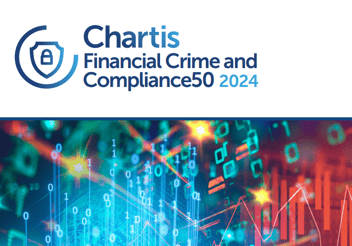The challenger bank, as a concept and a digital-first banking platform, appeared shortly after the financial crash of 2008/2009. This innovation in banking offered a new broom approach to banking, hoping to attract the many disaffected banking customers suffering from the recession and aftermath of the crash. One of the challenger banks' selling points was that they were lean and technologically advanced. This technological innovation gave rise to the generic term 'FinTech' to describe a digital-first approach to financial transactions that has disrupted traditional banking.
Since the challenger bank's introduction, many financial sector changes have occurred. One of the biggest challenges is the levels of fraud impacting the sector. The challenger banks must maintain healthy security in an industry ravaged by fraud, but can they do this while maintaining an excellent customer experience?
How does fraud impact the challenger bank?
Challenger banks emphasize the customer experience (CX), as a great CX differentiates them from their traditional banking counterparts. The great CX is what challenger banks pin their hopes on to attract customers. For example, CX specialists, BuiltForMars, have shown that a customer has to make five times more clicks to open an account with FirstDirect than Revolut.
The challenger bank's great CX is dependent on the mobile app and web banking, removing the need for face-to-face contact that has been an intrinsic part of the culture of the traditional bank. However, a LexisNexis report found that in 2021, 70% of fraudulent digital banking transactions occurred on a mobile device. The report also highlights that mobile bank app fraud accounted for the most significant increase in fraud.
The problem with creating a fast, mobile-first onboarding experience for customers is that something must give. Unfortunately, this 'give' looks like it comes in the lack of KYC/CDD (Know Your Customer/Customer Due Diligence) and AML (Anti-Money Laundering) checks. This was evidenced in a recent Financial Conduct Authority (FCA) review of how challenger banks address financial crime controls. The study, carried out throughout 2021, concluded that "a rise in the number of Suspicious Activity Reports reported by challenger banks, raising concerns about the adequacy of these banks' checks when taking on new customers."
In other words, creating an account with a challenger bank does not set robust 'challenges' when checking the authenticity of the customer. The FCA also questioned the level of maturity in the underlying customer risk-assessment frameworks used by challenger banks. In addition, the rush to make the customer onboarding experience quick and easy comes at the cost of achieving compliance with AML and other anti-fraud regulations.
Challenger banks and AML
Money laundering is the scourge of the financial sector, with estimates of global losses of around $1.6 trillion per year, according to a FACTI panel report. With poor AML and KYC/CDD checks, challenger banks risk attracting fraudsters looking for vulnerable systems to launder money. Moreover, inadequate verification provides a set of rails for cybercriminals to exploit. Fraud methods that rely on weak identity verification, or have little or poor AML checks, include synthetic identity fraud and trade-based money laundering. In addition, challenger banks are not using adequate structures to prevent fraudulent account creation or stop fraudulent online transactions. The vulnerabilities inherent in poor AML and KYC/CDD checks require that challenger banks integrate robust measures to mitigate financial fraud.
To focus the challenger bank on solutions to the challenge of financial fraud, the FCA report provided some important best practices for challenger banks. These recommendations include:
Use a risk-based approach to fraud: the FCA strongly recommends that challenger banks use a risk-based approach to AML controls and ensure that these controls reflect their business expansion and development.
Plug gaps in CDD: the FCA noted that most challenger banks had gaps in the CDD collected about an individual; for example, data on income and occupation were not typically collected. The challenger banks should redress and plug the gaps with better verification.
Use enhanced due diligence: challenger banks should use enhanced due diligence (EDD) as a formal procedure for high-risk circumstances. Again, the FCA gives the example of managing Politically Exposed Persons (PEPs).
How to create resilient challenger banks
Challenger banks are vulnerable to financial fraud because they have yet to harden their defenses. However, the challenger can learn from traditional banking and utilize existing robust mechanisms and best practices. Some of the most important measures that a challenger bank can deploy to create resilience against fraud are:
AML technologies that use smart analytics: money laundering is now a highly complex web of transactions and difficult to detect. A challenger bank should use transaction and behavioral monitoring tools for always-on security that generate alerts for compliance teams as risks arise.
Prevent account opening fraud: challenger banks have developed an excellent CX, but this needs to be augmented with robust identity checks. Customer Due Diligence (CDD), Know Your Customer (KYC), and Anti-money Laundering (AML) regulations require stringent verification of customers during customer onboarding. By using "dynamic scoring methodologies" that provide continuous risk assessment, a challenger bank can continue to provide an excellent CX but meet the requirements of regulations around KYC and CDD.
Enhanced due diligence and PEPs: the FCA pulled out a lack of EDD (enhanced due diligence) by the challenger banks. This lack of EDD can be addressed by using advanced technologies such as screening for PEPs (Politically Exposed Persons), as these individuals present a higher AML risk. PEP screening be performed in real-time and batch mode, with technologies like blockchain leading the way.
Challenger banks look like they are here to stay, and even many traditional banks are releasing their challenger banks. What must not happen is that challenger banks become a channel for fraud because of a lack of AML and KYC/CDD checks. Challenger banks must follow the advice of the FCA to stop fraud. Challenger banks should look to advanced and intelligent technological approaches that complement their great CX appeal. This way, customers can have that seamless experience but maintain security.
Learn more about Easnets AI-enabled solution PaymentGuard here. Contact us for an expert demo





